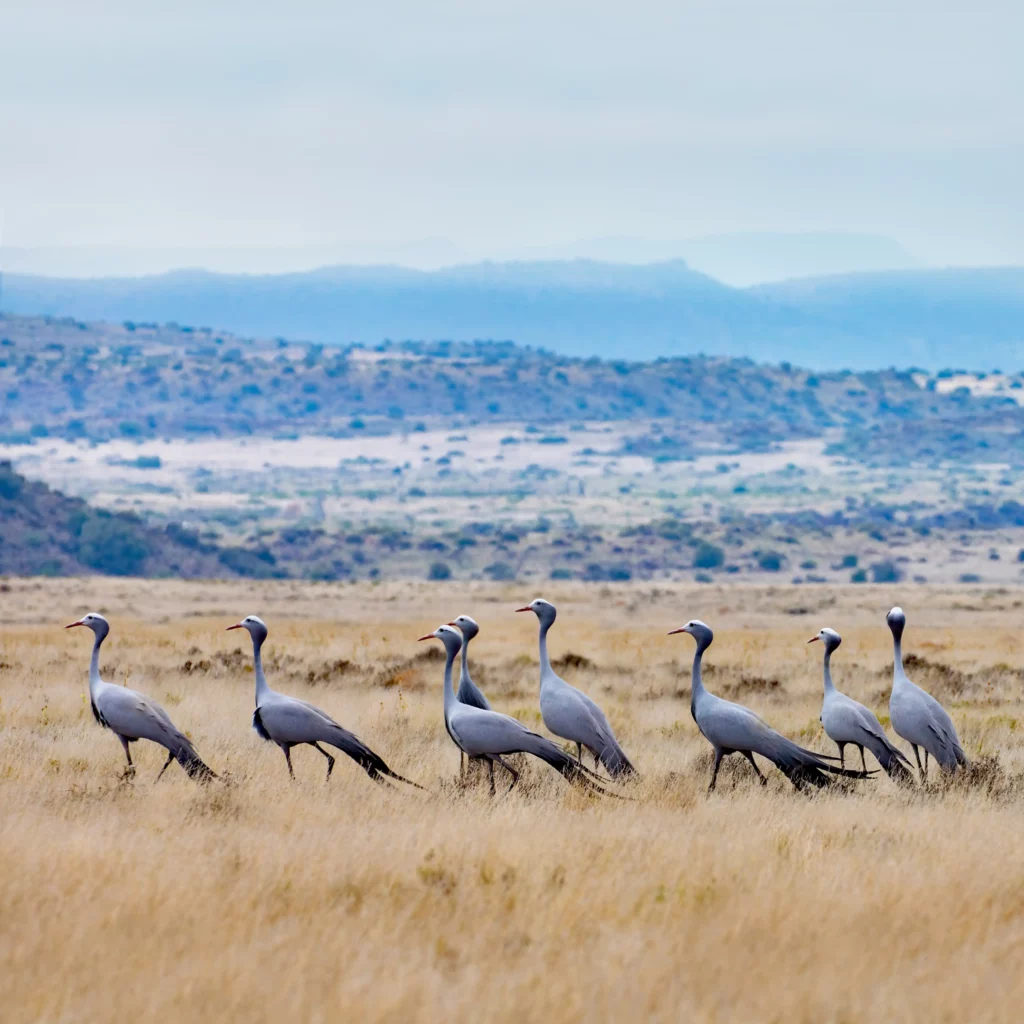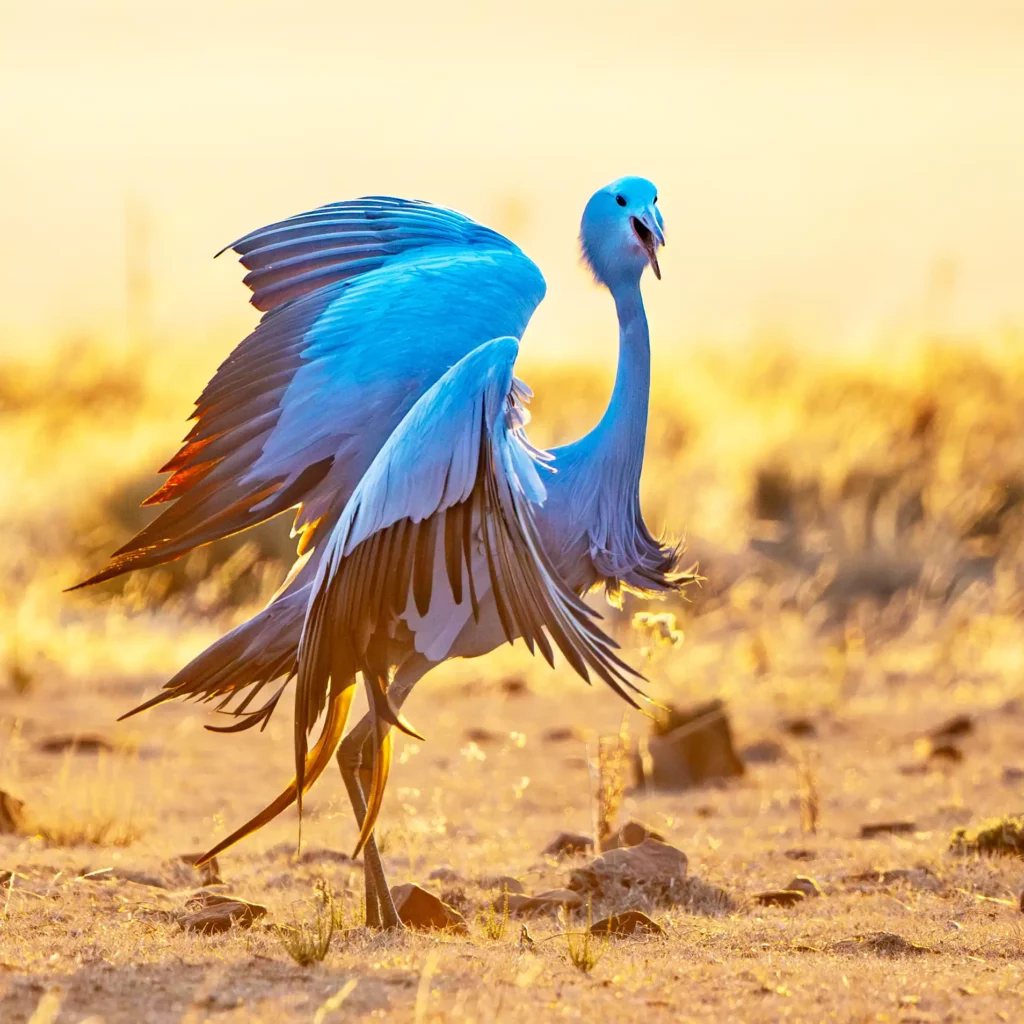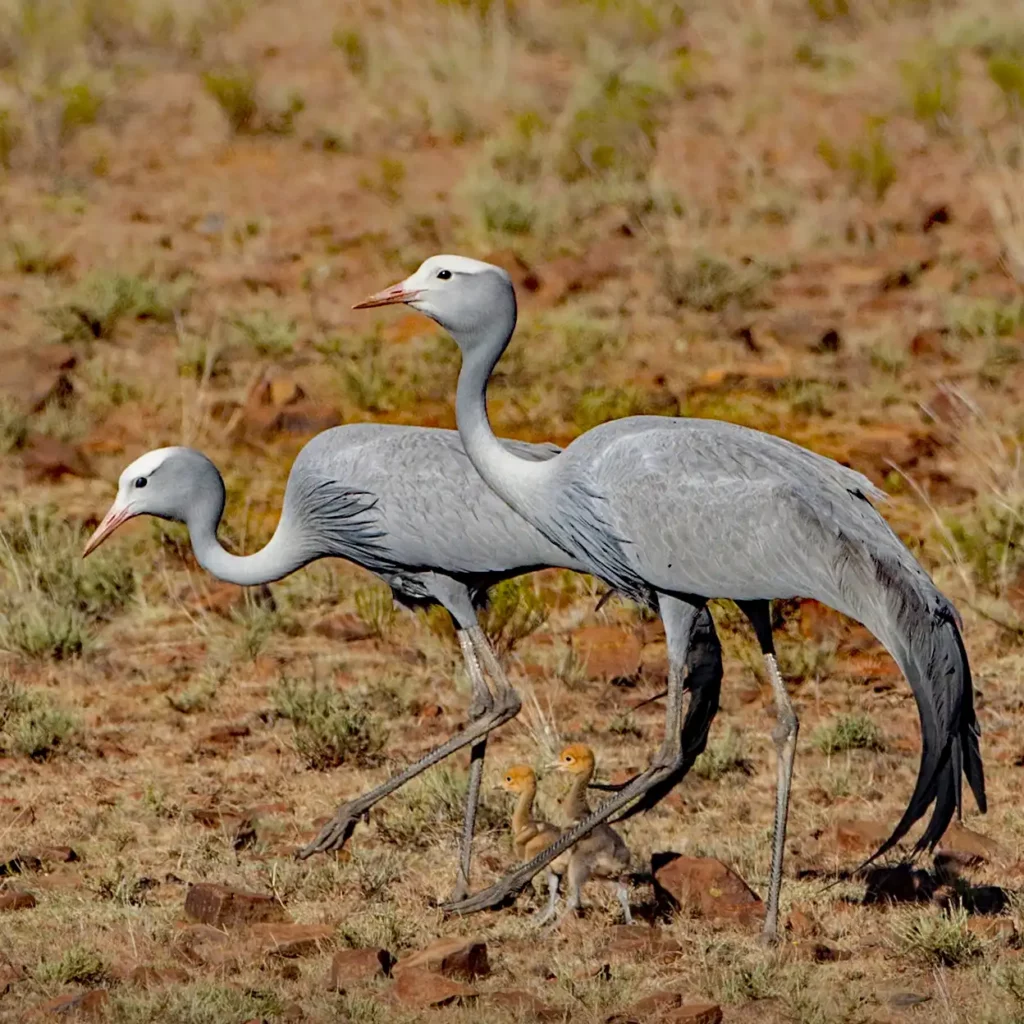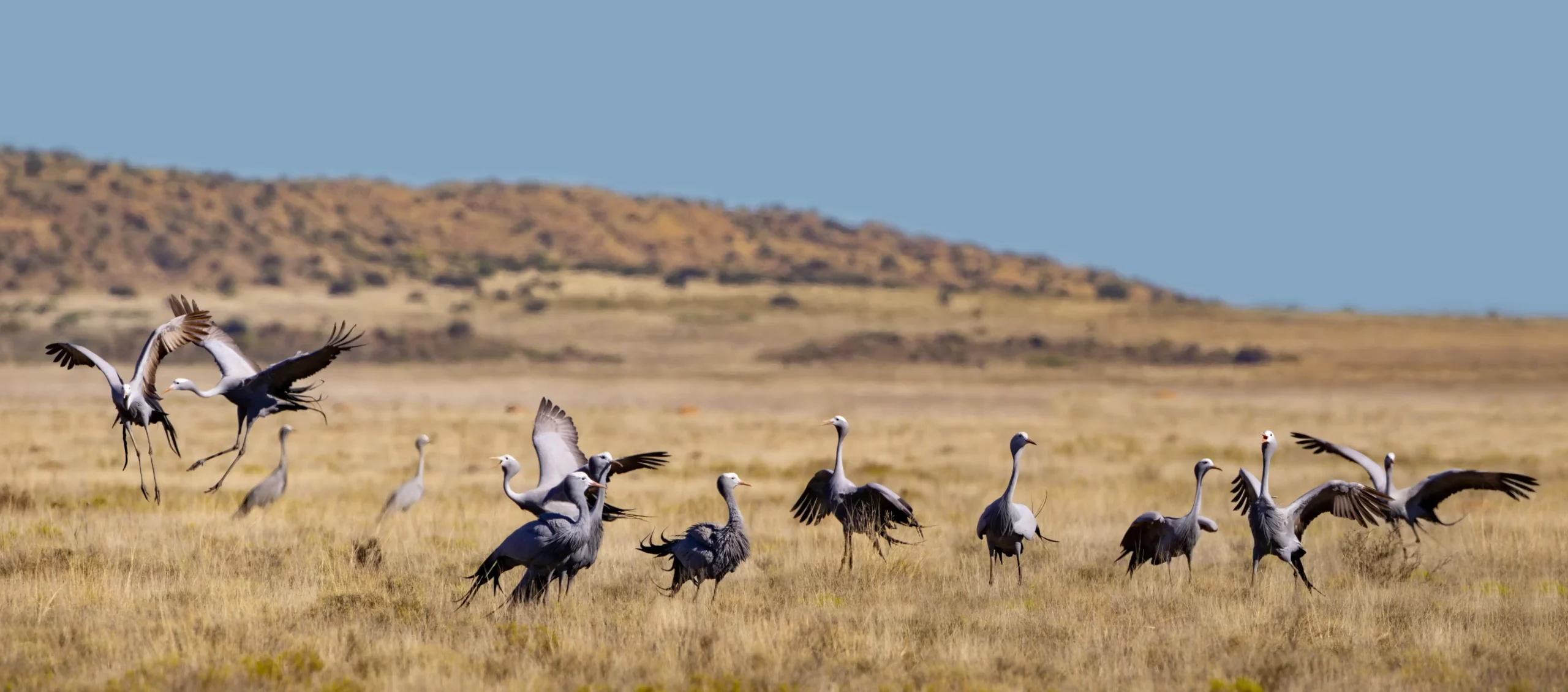Kishindo Private Game Reserve plays a crucial role in safeguarding the Blue Crane population. The reserve’s commitment to habitat preservation and sustainable practices provides a safe haven for these magnificent birds. By protecting their natural habitats and implementing conservation measures, Kishindo is helping to ensure the survival of the Blue Crane.

Visitors to the reserve have the unique opportunity to witness flocks of breeding Blue Cranes in their natural habitat. Guided game drives and offer close encounters with these majestic creatures, allowing guests to appreciate their beauty and understand the challenges they face.
A Glimpse into the Blue Crane's World
South Africa’s national bird, the Blue Crane, is a majestic and enigmatic creature that graces the landscapes of the Free State Province, including the picturesque Kishindo Private Game Reserve. With its distinctive azure plumage and graceful demeanour, the Blue Crane is a symbol of resilience and hope, a testament to the delicate balance of nature.
The Blue Crane, a member of the Gruidae family, is a large, ground-dwelling bird that can reach heights of up to 1.3 meters. Its striking blue-grey plumage, adorned with a white crown and a long, pointed beak, sets it apart from other avian species. Males and females are similar in appearance, though males tend to be slightly larger.
Beyond their physical attributes, Blue Cranes are renowned for their intricate courtship rituals. During mating season, males engage in elaborate displays, leaping into the air, spreading their wings, and performing a series of intricate dances. These rituals are not only a spectacle to behold but also serve as a vital part of their reproductive success. Pairing for life the parents incubate and raise the chicks in November and December, preferably near water.

Habitat and Conservation Challenges
Cultural Significance and Conservation Efforts

Conservation organizations and government agencies are working tirelessly to protect the Blue Crane. These efforts include habitat restoration, captive breeding programs, and public awareness campaigns. By raising awareness about the plight of the Blue Crane and supporting conservation initiatives, individuals can contribute to its long-term survival.
A Beacon of Hope
The Blue Crane is a remarkable species that has endured numerous challenges. Its resilience and beauty serve as a constant reminder of the importance of preserving our planet’s biodiversity. Kishindo Private Game Reserve plays a vital role in protecting this iconic bird and ensuring its future generations can continue to grace the South African landscape.
As visitors to Kishindo, we have the privilege of witnessing the Blue Crane in its natural habitat and contributing to its conservation. By supporting the reserve’s efforts and raising awareness about the importance of protecting this species, we can help ensure that the Blue Crane remains a symbol of hope and resilience for generations to come.
